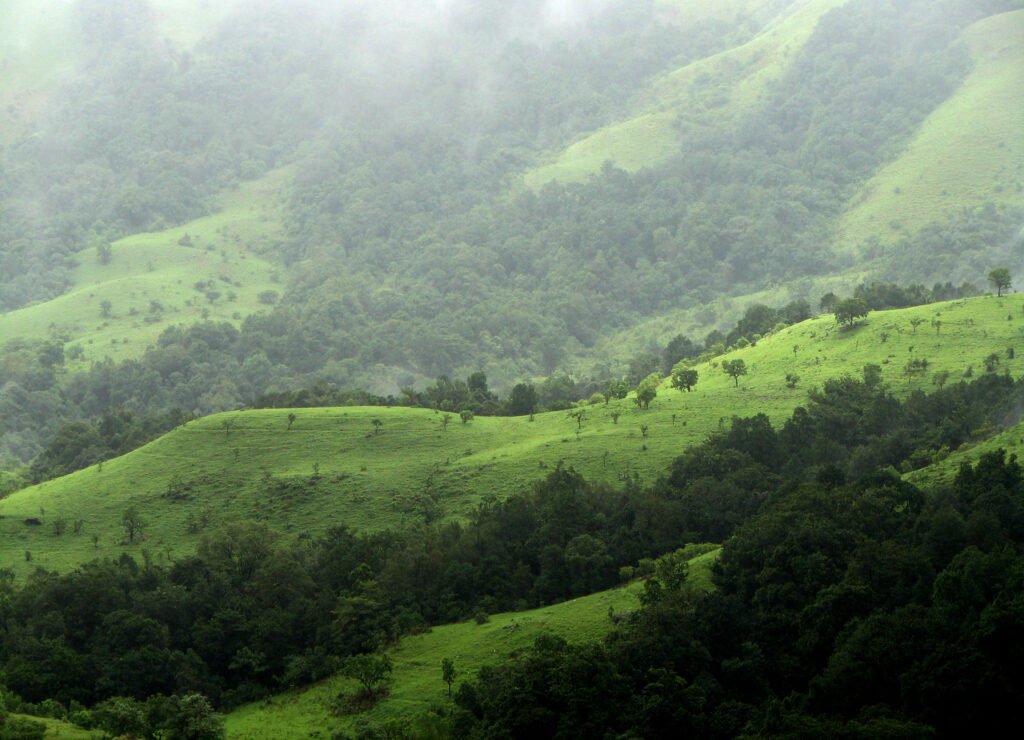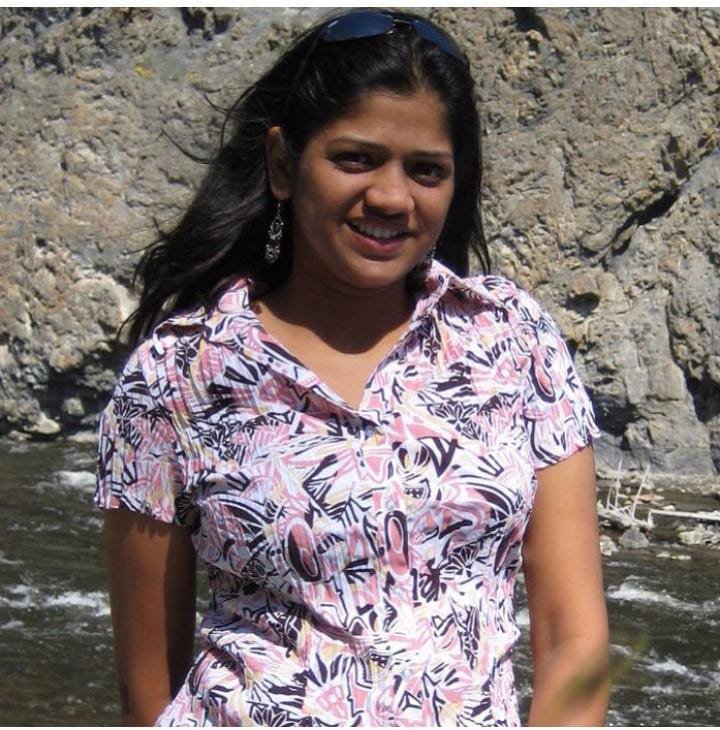There’s a certain magic to the Western Ghats just after the monsoon. The entire landscape is saturated in a thousand shades of green, the air is thick with the scent of wet earth, and the hills seem to breathe under a blanket of mist. While most weekend warriors from Bangalore flock to the famous peak of Kudremukh, I’ve always been drawn to the trails less travelled. And that’s how I found myself preparing for the Kurinjal trek.
The Kurinjal trek is Kudremukh’s quieter, wilder sibling. It shares the same DNA—the rolling Shola grasslands, the dramatic ridges, the panoramic views—but it lacks the crowds. It’s a trek for those who seek not just a destination, but a conversation with the mountains.

I’d heard whispers about it for years: a challenging trail, views that rival its famous neighbour, and an old, abandoned mining station that adds a touch of mystery. Last October, I finally packed my rain gear and my best trekking shoes to uncover this secret for myself. This isn’t just a guide; it’s the story of that journey, filled with the practical advice and on-the-ground reality you need to tackle this incredible peak.
About the Author:Hi, I’m V. As a travel blogger with a deep love for the Indian outdoors, the Western Ghats are my happy place. I’ve trekked extensively across Karnataka, but the raw, untamed beauty of the Kudremukh National Park keeps pulling me back. After multiple visits to the region, I explored the Kurinjal trail to create a definitive, first-hand guide for fellow adventurers looking to escape the crowds.
Kurinjal Trek: The Essential Facts
| Attribute | Details |
| Location | Kudremukh National Park, Chikmagalur, Karnataka |
| Trek Distance | Approx. 14-16 km (round trip) |
| Maximum Altitude | ~5,745 feet (1,751 meters) |
| Difficulty Level | Moderate to Difficult |
| Start/End Point | Bhagavathi Nature Camp (Forest Office) |
| Ideal Duration | 1 Day Trek (Best done as a weekend trip) |
| Best Season | Post-Monsoon (September to February) |
| Permits Required | Yes, a forest permit is mandatory and must be obtained in person. |
Why Kurinjal? The Case for the Quieter Trail
In a district brimming with famous treks, why choose Kurinjal? For me, the answer is simple: it offers a more raw and unfiltered trekking experience.
- Solitude is the Ultimate Luxury: On the day I trekked Kurinjal, my group and I were the only ones on the entire trail. We had the whole mountain to ourselves. There were no lines at the forest office, no traffic jams on narrow paths. The only sounds were the wind whistling through the grasslands and our own heavy breathing.
- A 360-Degree Panorama that Stuns: The summit of Kurinjal is a grassy plateau that offers a breathtaking, unobstructed view of the entire Kudremukh range. You can see the iconic Kudremukh (Horse-Face) peak, Gangadikal, and countless other rolling hills that look like a petrified green ocean. It’s a view you have to earn, and it’s worth every single step.
- A Journey Through Diverse Terrains: The trail is a masterclass in Western Ghats geography. It takes you through dense, dark Shola forests, across gurgling streams, up steep grassy slopes, and along an exposed ridgeline that will test your nerve and thrill your senses.
Chadar Trek: The Ultimate Guide to the Frozen River Trek (2025)
The Day-by-Day Itinerary: A Weekend Blueprint
Kurinjal is a one-day trek, but the travel to and from the remote trailhead makes it a perfect weekend expedition from Bangalore or Mangalore.
Day 0: The Overnight Escape from the City
The adventure always begins on a Friday night. I boarded an overnight bus from Bangalore bound for Kalasa, a quiet temple town that serves as the gateway to this part of the Kudremukh National Park. An 8-hour journey through the dark is a small price to pay for the adventure that awaits.
Day 1: The Trek to the Summit and Back
- Trek Distance: Approx. 14-16 km
- Time Taken: 7-8 hours (a full, demanding day)
Morning (6:00 AM – 9:00 AM): The Logistics Run
We arrived in Kalasa in the early morning. From here, the first step is to hire a 4×4 Jeep. This is not optional. The road to the Bhagavathi Nature Camp, where the forest office is, is a rugged, thrilling, and bumpy ride through coffee plantations.
At the forest office, you complete the formalities. You MUST have your original ID card. The permits are issued on a first-come, first-served basis, and there’s a cap on the number of trekkers allowed per day. This is where you pay the fees and are assigned a mandatory local guide.
The Ascent (9:00 AM – 1:00 PM): The Real Work Begins
The trek starts right from the forest office. The initial trail is a gentle walk that quickly turns into a steep climb through a dense Shola forest. This section is shaded and beautiful, with the sound of insects and the drip of water from leaves creating a natural symphony.
After about 45 minutes, you emerge from the forest onto the first of the great green hills. This is where the views begin, and also where the sun and wind become factors. The trail from here is a steady, relentless ascent.
My Experience: The most exhilarating part of the trek is the ridgeline walk. To your left is a steep drop, and to your right is the endless expanse of the green hills. The wind was so strong I had to brace myself with every step, feeling incredibly small and alive. Our guide pointed out the ruins of the old mining station far below, a relic of a time when this pristine landscape was exploited for iron ore.
The final push to the summit is the steepest part. It’s a scramble up a grassy slope that will have your calves burning, but the promise of the view pulls you forward.
The Summit (1:00 PM – 2:00 PM): On Top of the World
Reaching the peak is a moment of pure triumph. The 360-degree view is staggering. We found a sheltered spot, unpacked our lunch, and just sat in silence for a while, absorbing the sheer scale and beauty of the Kudremukh National Park.
The Descent (2:00 PM – 5:00 PM): The Knee-Tester
The journey back follows the same route. It’s faster, but it’s incredibly demanding on your knees. This is where trekking poles become an absolute necessity, not a luxury. The slippery sections and steep gradients require careful footing. We arrived back at the forest office, exhausted but with a profound sense of accomplishment. From there, it was the jeep ride back to Kalasa and the overnight bus back to Bangalore.
An Honest Look at the Kurinjal Trek Difficulty
I would classify the Kurinjal trek as Moderate to Difficult.
- The Challenge: The difficulty comes from the sheer distance (16 km is a lot for a single day) and the continuous, steep inclines. There are very few flat sections to catch your breath. It requires high stamina and endurance.
- Who is it for? It’s ideal for trekkers with some prior experience who are comfortable with long walking days. If you’ve done treks like Savandurga or Skandagiri and found them manageable, Kurinjal is a great next step.
- Who should be cautious? Absolute beginners might find this trek overwhelming. The physical demand is significant.

My Essential Packing List for a Western Ghats Trek
Packing for the Ghats is all about managing rain, mud, and leeches.
Clothing & Footwear:
- Quick-Dry T-shirt & Trekking Pants (1 set): Lightweight and breathable.
- Rain Jacket / Poncho: Essential. The weather can change in minutes.
- Trekking Shoes: The most crucial item. They MUST have a deep tread and excellent grip for muddy and grassy slopes.
- Leech Socks: A must-have for peace of mind during the monsoon and post-monsoon season. They work.
Gear & Essentials:
- Daypack (20-30 litres): With a rain cover.
- Water Bottles (at least 2 litres): You will need to stay hydrated. There are streams to refill, but carry a purifier or tablets.
- Trekking Poles (Pair): I cannot stress this enough. Your knees will thank you on the descent.
- Packed Lunch & High-Energy Snacks: You will burn a lot of calories.
- First-Aid Kit: With antiseptic, band-aids, pain relief spray, and personal meds.
- Sun Protection: Sunscreen, a hat, and sunglasses. The sun is harsh on the exposed grasslands.
Blogger’s Tip: Carry a small pouch of salt or a sanitizer spray. Dabbing it on a leech makes it fall off instantly. Don’t panic and pull it; that can cause infection.
Permits, Guides, and Logistics: The Nitty-Gritty
- Permits are Mandatory: Do not attempt this trek without one. The Kudremukh National Park is a protected area, and the rules are strict. Permits are issued at the Bhagavathi Nature Camp forest office.
- Guides are Mandatory: The Forest Department will assign a local guide to your group. This is for your safety and to ensure the fragile ecosystem is respected.
- Getting to the Trailhead: The only way to get from Kalasa to the forest office is by hiring a local 4×4 Jeep. It’s best to pre-arrange this a day in advance, especially on weekends.
Frequently Asked Questions (Answered from the Trail)
Is Kurinjal better than the Kudremukh trek?
“Better” is subjective. Kudremukh is more famous and arguably has a more iconic summit view. Kurinjal offers a very similar landscape but with far more solitude and a wilder feel. If you hate crowds, you will love Kurinjal.
Are there leeches?
Yes. From June to December, expect leeches, especially in the forest sections. Wear leech socks, tuck your pants into your socks, and you’ll be fine. They are a harmless part of the ecosystem.
Can I camp on the trail?
No. Camping is strictly prohibited inside the Kudremukh National Park to protect the wildlife and environment. It is a day trek only.
Final Thoughts: The Reward of the Green Wilderness
The Kurinjal trek is a powerful reminder that sometimes the best experiences lie just off the popular map. It’s a tough, demanding, and enriching journey. It pushes your physical limits while soothing your soul with its vast, silent, green landscapes.
As I sat on the bus back to Bangalore, my legs aching and my shoes caked in mud, I felt a deep sense of peace. Kurinjal doesn’t just give you a summit certificate; it gives you a piece of its wild, untamed heart. And for any true trekker, that is the greatest reward of all.


